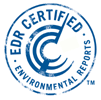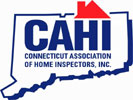Helpful Hints: Total Maintenance - Year 'Round
Chimneys - When a Flue is Too Big
Answers to the Chimney Quiz
- Yes. Many chimneys have a cap on the fireplace flue to prevent animal intrusion but not on the furnace flue. Water mixing with soot in the furnace flue will create acid and erode the terra cotta tiles. Eventually it will need a new liner. If there is no liner the bricks will erode instead.
- Repointing involves grinding out the cement joints and replacing the mortar with new mortar. If the brickwork is sound and only the joints are deteriorated you can still repoint. If the bricks themselves are loose the appropriate number of courses of brick must be torn down and rebuilt.
- Masons started putting terra cotta flue tiles inside the brickwork in the early 1920's. However, a few chimneys built later have no liner and some of the more expensive homes had liners earlier. At this time relining is usually needed on homes built before 1930 and often on homes built between 1930 and 1950. Most of the liners on homes built after 1950 are still in acceptable condition.
- No. In 1998 the law was changed so that any new appliance being installed must be installed into a lined chimney.
- No. Since the 1920's, all appliances, stoves and fireplaces must have there own separate flue.
- No. See number 5.
- Technically no. In other parts of the country there are horrified that it is standard practice in the northeast. It is not against code in this area but the flue tiles will deteriorate faster when the water vapor from the gas appliance mixes with the sulfur from oil appliance.
- No. An open fireplace needs a much larger flue to draw properly than a wood stove. Sometimes a wood stove has been installed because the fireplace did not draw well due to an undersized flue.
- On an average sized fireplace (the opening is less than 864 square inches or 6' squared) the non-combustible hearth should extend 16" in front of the opening. If the fireplace opening is more than 864 square inches the hearth must extend 20" in front of the opening.
- The lintel is on the inside front wall just above the firebox. In some of the antique homes they used a large wood beam as the lintel. If you inspect a wood lintel it is usually charred or pyrolysed. If the fireplace is to be used it will need to have a non-combustible shield installed.
- When a chimney is built, a throat damper is installed in the area just above the firebox. This is the plate you open to inspect the flue. When it is damaged or missing the usual method of replacement is to install a top-mounted damper. These dampers it on top of the flue tile with a metal wire coming down into the fireplace attached to a pull chain. A top-mounted damper seals better than a throat damper as it has a rubber gasket. It also maintains a column of warm air in the chimney making it easier to light and helping to maintain the heat in the house better.
- No. There is too much risk with the flammable chemicals that are typically stored there.


